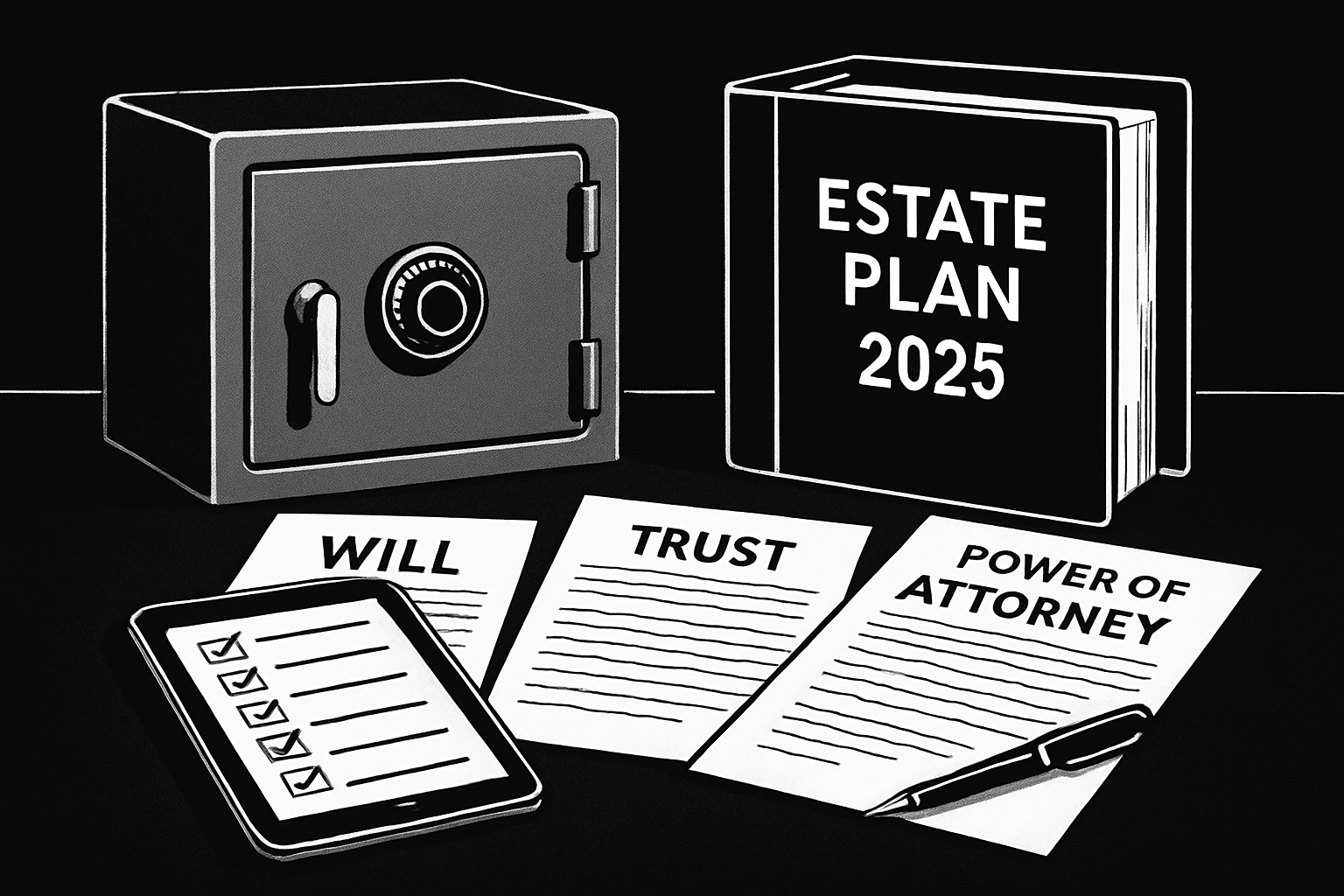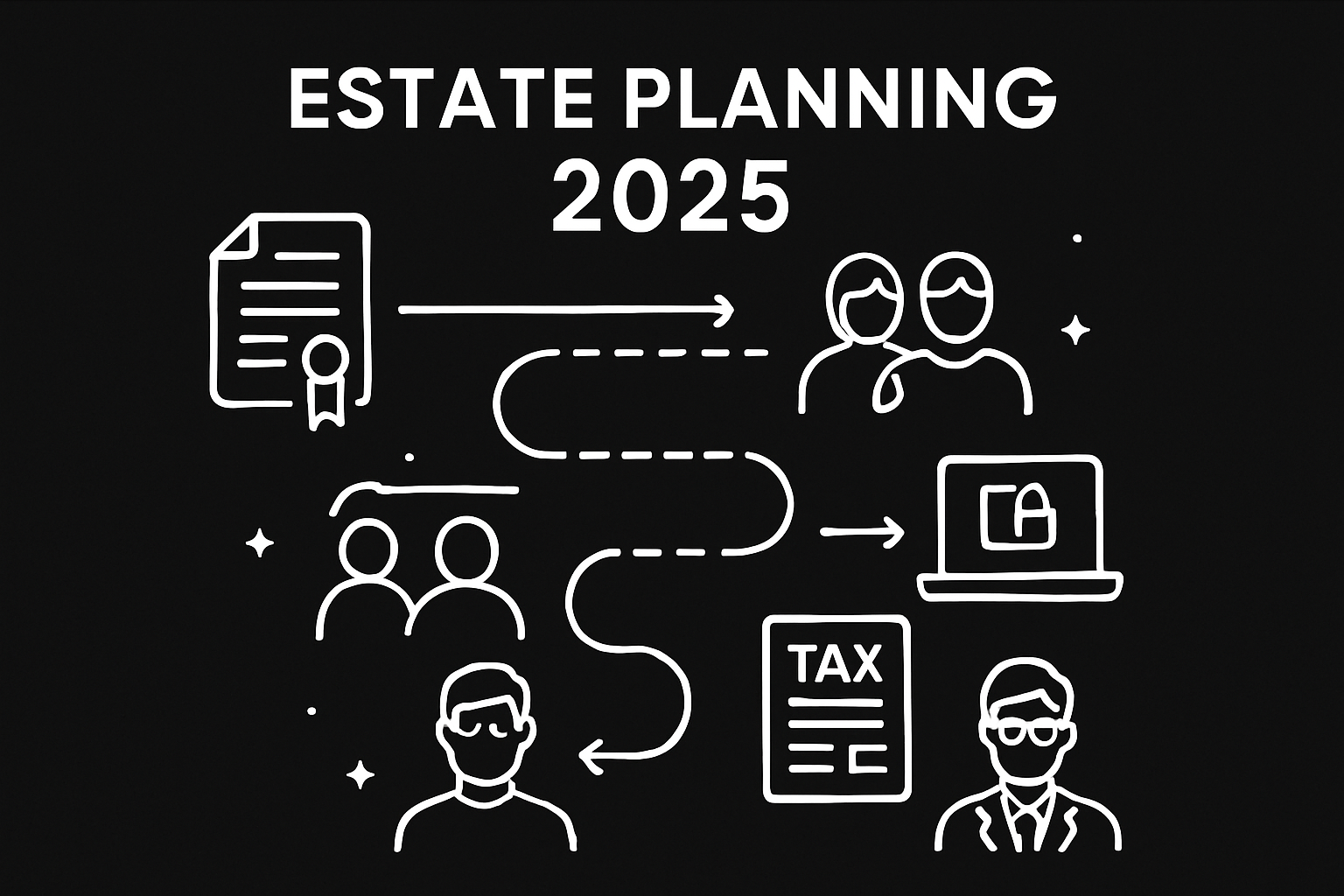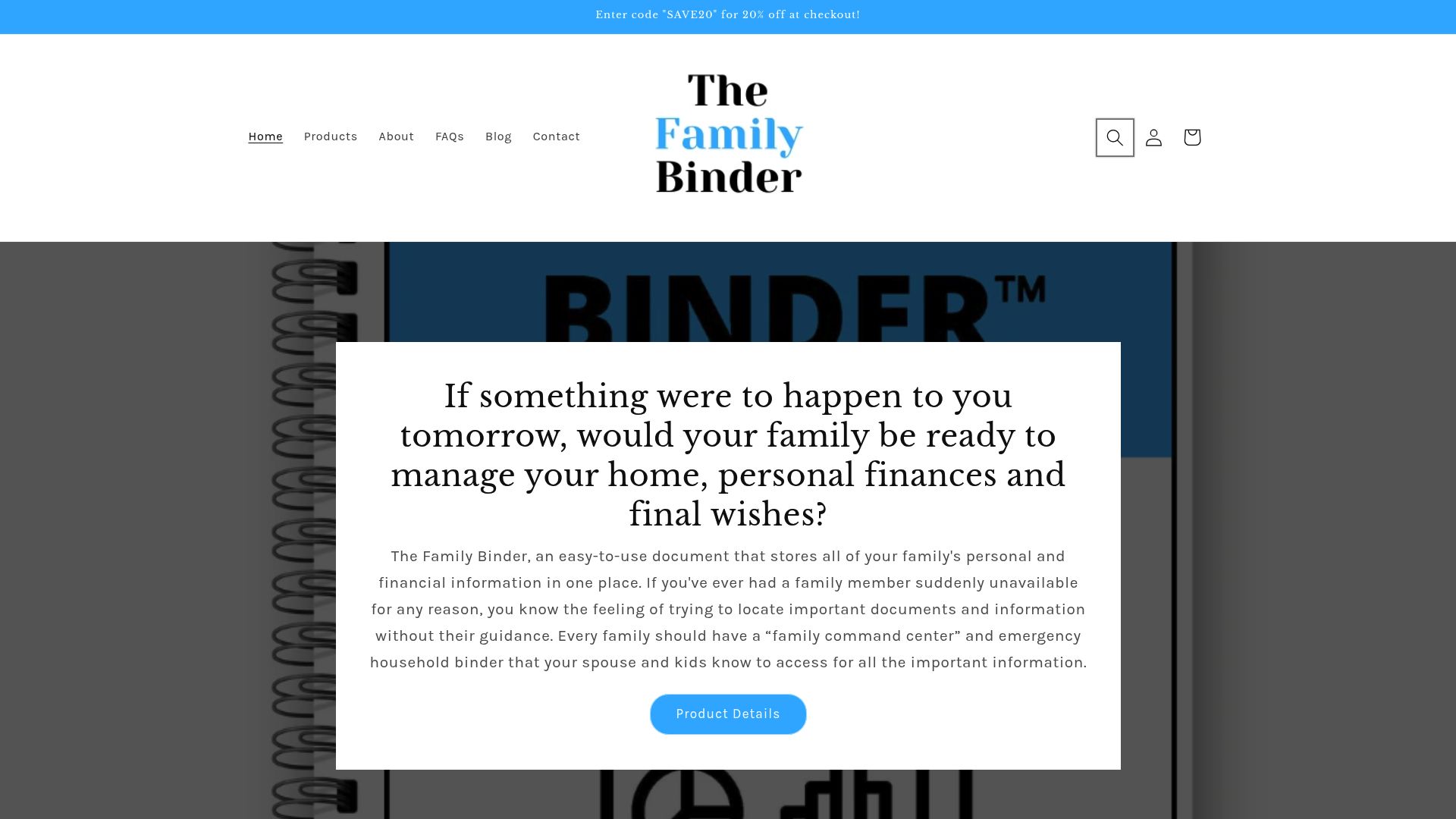Imagine your family struggling with confusion, delays, and costly mistakes because your estate plans are incomplete. You don’t want that to be your legacy. This estate planning guide for 2025 gives you the knowledge you need to protect your assets, provide for your loved ones, and avoid legal headaches. Here, you’ll find practical steps and up-to-date strategies, so you can feel confident about your family’s future. We’ll cover why planning matters, which documents you need, how taxes could affect you, and the smartest ways to organize everything. Let’s make peace of mind your goal—starting now.
Understanding the Importance of Estate Planning in 2025
Estate planning is no longer just about writing a will and calling it a day. The landscape has shifted dramatically, and the right estate planning guide can help you navigate this new reality with confidence.

Why Estate Planning Is Crucial—Now More Than Ever
Today's families are more complex than ever before. Blended households, second marriages, and dependents with special needs create unique challenges that a thorough estate planning guide can help address.
Assets have also become more diverse. It's not just about the family home anymore—digital assets, investment accounts, and business interests all need to be considered. With possible changes to both state and federal laws on the horizon, such as adjustments to the estate tax exemption, keeping your plans current is essential. For example, the federal estate tax exemption was $11.58 million in 2020, but this figure may decrease in 2025, impacting many families.
A well-crafted estate planning guide helps you avoid probate delays and costly disputes, ensuring your wishes for healthcare, guardianship, and asset distribution are honored. Protecting minor children and vulnerable beneficiaries from unintended outcomes is another vital reason to plan ahead. Without a will, state statutes determine who inherits—often with results that don't fit modern family dynamics.
Recent findings from the Estate Planning Report 2025 show that more Americans are recognizing the importance of having a plan in place, yet many still lack updated documents. This makes it even more crucial to act now and create a plan that reflects your unique situation.
The Consequences of Not Having a Plan
Failing to follow an estate planning guide can have serious consequences. Without clear instructions, you lose control over who inherits your assets. This often leads to unnecessary family disputes and even litigation, causing emotional and financial strain.
Higher taxes and legal fees are also a risk. Outdated or missing documents can delay the distribution of assets, which is especially problematic for business owners or those with complex estates. For instance, if a parent dies without an estate plan, minor children's inheritances can be left at risk of mismanagement or court intervention.
Here's a quick summary of potential pitfalls:
| Consequence | Impact |
|---|---|
| Loss of control | Assets may go to wrong heirs |
| Family disputes | Legal battles, broken ties |
| Higher taxes/fees | Less money for beneficiaries |
| Delays | Financial hardship, confusion |
Ultimately, not having a current estate planning guide can leave your loved ones facing confusion and costly setbacks. Taking action today means peace of mind for tomorrow.
Key Legal Documents Every Estate Plan Needs
Every solid estate planning guide emphasizes the importance of having the right legal documents in place. These documents form the foundation of your plan, ensuring your wishes are honored and your loved ones are protected.
Choosing and updating these documents isn’t just about paperwork. It’s about peace of mind for you and your family. Let’s break down the essentials every estate planning guide should cover.

Wills: The Foundation of Your Estate Plan
A will is the core document in any estate planning guide. It directs how your assets are distributed after death and allows you to name an executor to manage your estate. For families with minor children, a will lets you appoint guardians—a critical decision that state law won’t make for you.
Each state has its own requirements. Most require you to be over 18, of sound mind, and have witnesses (like Illinois, which mandates two non-beneficiary witnesses). Remember to review and update your will regularly, especially after major life changes.
For a detailed breakdown of the most important legal documents, see the Top 10 Essential Documents for Families.
Trusts: When and Why to Use Them
A comprehensive estate planning guide explains that trusts can offer benefits beyond a will. Common types include:
- Revocable Living Trusts: Offer flexibility and probate avoidance.
- Irrevocable Trusts: Provide asset protection and can help reduce estate taxes.
- Special Needs Trusts: Protect vulnerable beneficiaries without jeopardizing government benefits.
Trusts are especially useful for blended families, large estates, or when privacy is a concern. They allow you to set specific terms for how and when assets are distributed, giving you control and flexibility.
Powers of Attorney (POA)
No estate planning guide is complete without addressing powers of attorney. These documents allow you to appoint trusted individuals to handle your finances and healthcare decisions if you become incapacitated.
- Financial POA: Handles banking, bills, and investments.
- Healthcare POA: Makes medical decisions if you can’t.
Choose agents you trust completely, and be specific about the powers you’re granting. A well-drafted POA can prevent costly court interventions and family disputes.
Advance Healthcare Directives & Living Wills
Advance healthcare directives and living wills are essential parts of any estate planning guide. They let you specify your medical wishes in case you’re unable to communicate them.
By clarifying your preferences, you reduce the emotional burden on your loved ones during emergencies. These documents can cover life support decisions, pain management, and organ donation.
Beneficiary Designations
Many assets—like life insurance, retirement accounts, and certain bank accounts—pass outside of your will through beneficiary designations. Every estate planning guide stresses the importance of keeping these up to date.
Beneficiary designations override instructions in wills and trusts. Review them regularly, especially after major life events, to ensure your assets go exactly where you intend.
Other Key Documents
Depending on your situation, your estate planning guide should also mention:
- Buy-sell agreements for business owners, ensuring smooth succession.
- Deeds for real estate, including transfer on death (TOD) deeds where available. For instance, Illinois allows TOD deeds to transfer property directly to beneficiaries.
Keeping these documents current and accessible helps prevent confusion, delays, and legal headaches for your loved ones.
Step-by-Step Estate Planning Process for 2025
Estate planning can feel overwhelming, but breaking it down into manageable steps makes the entire process less daunting. This estate planning guide provides a clear path to follow, ensuring every critical detail is addressed. Let’s walk through each essential step together.

Step 1: Define Your Goals and Assess Your Situation
Begin by clarifying your objectives. Do you want to provide for loved ones, support a favorite charity, or ensure a smooth business transition? List all assets—homes, investments, retirement accounts, digital profiles, and personal property.
Consider family dynamics. Are there children from prior marriages, dependents with special needs, or unique circumstances? A thorough assessment now saves headaches later. If you need a detailed checklist, the Estate Planning Checklist 2025 is a helpful resource to complement this estate planning guide.
Step 2: Assemble Your Estate Planning Team
You don’t have to navigate this alone. The right professionals can make a world of difference. Attorneys draft and review legal documents. Financial advisors help optimize asset distribution. Accountants advise on tax implications, while insurance agents and trust officers provide additional expertise.
Ask about fee structures—some charge flat fees, others by the hour or asset value. For complex estates, especially with business interests or changing laws, professional guidance is crucial. Rely on your estate planning guide to know which experts to consult.
Step 3: Draft and Execute Essential Legal Documents
Collaborate with your team to prepare your will, trust documents, powers of attorney, and advance healthcare directives. Make sure each document meets your state’s legal requirements—such as proper witnessing and notarization.
Avoid common pitfalls. Self-drafted documents often miss state-specific provisions or fail due to improper execution. Your estate planning guide should emphasize that even a small oversight can invalidate your wishes. Double-check every signature and provision.
Step 4: Update Beneficiary Designations and Asset Titles
Many assets—like life insurance, IRAs, and bank accounts—pass directly to named beneficiaries, not through your will. Review and update these designations regularly.
For real estate or joint financial accounts, consider how you hold title: joint tenancy, tenants-in-common, or use of transfer-on-death (TOD) and payable-on-death (POD) options. The estate planning guide reminds you that correct titling can help assets bypass probate and go straight to intended recipients.
Step 5: Plan for Taxes and Probate
Tax implications can impact what your heirs actually receive. Familiarize yourself with federal and state estate, gift, and inheritance taxes. Consider annual gifting, charitable donations, or trust structures to minimize liabilities.
Probate can be time-consuming and public. Use strategies like living trusts, TOD deeds, and updated beneficiary designations to avoid unnecessary probate delays. Your estate planning guide should always include a section on tax and probate planning.
Step 6: Communicate Your Plan
Don’t keep your intentions a secret. Discuss your estate plan with family members and any named executors or trustees. Share the location of original documents and contact information for your advisors.
Clear communication now prevents confusion and disputes later. This estate planning guide encourages transparency, which helps loved ones act confidently during difficult times.
Step 7: Review and Update Regularly
Your life will change—and so should your estate plan. Major events like marriage, divorce, births, deaths, or significant asset changes all call for a review.
Set a reminder to revisit your estate planning guide annually, or whenever the law changes. Remember, many plans become outdated within five years, so regular updates are essential to protect your legacy.
Organizing and Storing Your Estate Planning Information
Getting organized is a crucial—and often overlooked—step in any estate planning guide. With so many documents, accounts, and contacts involved, clear organization prevents confusion and ensures your wishes are carried out smoothly. Imagine your loved ones searching through drawers or emails, only to find missing paperwork when it matters most. Good organization is the foundation of a stress-free estate settlement.
Best Practices for Document Organization
Every effective estate planning guide stresses the importance of keeping documents both secure and accessible. Originals of wills, trusts, and powers of attorney should be stored in a fireproof safe or with your attorney. Keep certified copies in a secondary secure location, such as a trusted family member’s home.
Create a master list that includes:
- All bank, investment, and retirement accounts
- Insurance policies and contact details
- Real estate deeds and mortgage information
- Passwords to digital accounts (stored securely)
This list is a roadmap for your executor or loved ones, making it easier to locate vital assets. Remember to share the location of your estate planning guide and documents with key individuals. Digital solutions, like encrypted cloud storage and password managers, provide secure, organized access from anywhere. Regularly review your system to ensure it reflects your current assets and wishes.
How The Family Binder Simplifies Estate Planning Organization
Bringing everything together in one place is the ultimate goal of any estate planning guide. One innovative solution is The Family Binder—a comprehensive, fillable PDF designed to help families organize all estate, financial, and personal information.

The Family Binder allows you to consolidate account details, insurance policies, home records, and legal documents. It’s printable and editable, making it easy to update as life changes. For those seeking a practical approach, How The Family Binder Simplifies Estate Planning offers step-by-step guidance on using this tool.
Unlike legal documents that only cover asset transfer, The Family Binder includes day-to-day instructions, emergency contacts, and even care wishes. It empowers retirees, caregivers, and executors to manage affairs efficiently, reducing stress and confusion when it matters most.
Keeping Your Plan Secure and Up-to-Date
An estate planning guide is only as good as its ability to adapt to change. Make a habit of updating your binder or digital system whenever you open new accounts, change insurance policies, or update contact information. Limit access to these records to only trusted individuals.
For digital files, encrypt sensitive data and use strong, unique passwords. Regularly test access to ensure executors or family members can retrieve documents if needed. A well-organized estate planning guide can save weeks of time and thousands of dollars in legal fees during estate administration. Staying proactive gives your loved ones clarity and peace of mind.
Navigating Taxes, Probate, and Asset Transfers in 2025
Taxes, probate, and asset transfers are at the heart of any effective estate planning guide. As we look toward 2025, understanding these elements will help you protect your legacy, avoid surprises, and pass assets smoothly to your loved ones.
Estate, Gift, and Inheritance Taxes: What’s New for 2025?
Tax laws are always evolving, making it vital for your estate planning guide to address both federal and state changes. In 2025, the federal estate tax exemption may decrease from its 2020 level of $11.58 million, so staying updated is crucial. Many states have separate estate or inheritance taxes with much lower thresholds—Illinois, for example, has a $4 million exemption.
Portability allows a surviving spouse to use their partner’s unused federal exemption, but this doesn’t always apply at the state level. The annual gift tax exclusion (historically $15,000, but check for 2025 updates) lets you reduce your taxable estate with strategic gifts. Direct payments for medical or tuition expenses and charitable donations are also smart moves.
For more up-to-date figures and trends, see the latest Estate Planning Statistics 2025. Your estate planning guide should always reflect these changes.
Understanding Probate and How to Avoid It
Probate is the court-supervised process of transferring assets after death. Some assets (like those held in joint tenancy, with TOD/POD designations, or in trusts) skip probate entirely, while others—such as individually owned real estate or personal property—do not.
While probate can offer creditor protections and resolve disputes, it’s often public, time-consuming, and expensive. Many people use living trusts, proper asset titling, or beneficiary designations to bypass probate and speed up distributions.
A well-crafted estate planning guide explains strategies for avoiding probate, emphasizing the importance of keeping documents and designations up to date. Avoiding probate helps your family access assets quickly and with less stress.
Asset Transfer Mechanisms
How your assets are titled determines how they transfer at death. Joint tenancy, tenants-in-common, and tenancy by the entirety each have unique implications for inheritance and control. For example, joint tenancy allows assets to pass directly to the surviving owner.
Transfer on death (TOD) and payable on death (POD) designations are simple yet powerful tools for accounts and even real estate in some states. In Illinois, a TOD instrument can transfer real estate directly to beneficiaries, bypassing probate.
Your estate planning guide should include a table summarizing these options:
| Mechanism | Probate? | Direct Transfer? | Best For |
|---|---|---|---|
| Joint Tenancy | No | Yes | Couples, co-owners |
| Tenants-in-Common | Yes | No | Unrelated owners |
| TOD/POD | No | Yes | Accounts, real estate |
| Living Trust | No | Yes | Complex estates |
Choosing the right mechanisms keeps your plan efficient and clear.
Special Considerations for Business Owners and Complex Estates
Business owners face unique estate planning challenges. Succession planning, buy-sell agreements, and proper business valuation are essential to ensure smooth transitions and minimize disputes or tax surprises. Coordinating your business and personal estate plans is critical.
A comprehensive estate planning guide should address these complexities directly. For a step-by-step approach to business succession, see Building a Legacy: Business Succession Roadmap.
Complex estates often benefit from professional guidance—attorneys and financial advisors can help align personal, business, and tax strategies for lasting security.
Common Estate Planning Mistakes and How to Avoid Them
Even with the best intentions, it's easy to make costly mistakes when following an estate planning guide. These errors can leave your loved ones with confusion, delays, or missed opportunities. Let's break down the most common missteps and how you can steer clear of them in your own estate planning journey.
Procrastination and Outdated Plans
Waiting until a crisis to start your estate planning guide is a recipe for trouble. Life changes fast—marriages, divorces, births, and deaths can all make your documents obsolete. Review your plan regularly, ideally every year or after any major event, so your wishes always match your current life.
Incomplete or Improperly Executed Documents
A will or trust that's missing signatures, witnesses, or key provisions can be as bad as having nothing at all. Many DIY documents fail to meet legal standards, leaving assets at risk. To avoid this, work with professionals who ensure every requirement is met and your estate planning guide stands up in court.
Overlooking Beneficiary Designations and Asset Titles
Did you know that assets like retirement accounts and life insurance bypass your will? If your beneficiary designations are outdated, your estate planning guide could be ignored for these assets. Always update beneficiary forms when life changes, and check account titles to ensure they align with your plan.
Ignoring Digital Assets and Online Presence
Most estate planning guide checklists skip digital assets, but your online accounts, emails, and cryptocurrencies need attention, too. Without clear instructions, your family might be locked out of vital information. List your digital assets and provide secure, legal access details for trusted individuals.
Lack of Communication and Organization
Even the best estate planning guide is useless if no one knows where your documents are. Disorganized records can cause delays, lost assets, or extra legal fees. Combining traditional documents with digital solutions can help—see The Family Binder vs. Traditional Estate Planning for ideas on integrating both for maximum clarity.
Underestimating Tax and Probate Implications
Some people assume their estate planning guide automatically avoids taxes or probate, but laws change and strategies matter. Failing to plan for taxes or using the wrong titling can erode your estate. Consult experts to keep your plan efficient and up to date.
The Value of Professional Guidance
Relying only on an online estate planning guide can be risky, especially for complex situations. Laws vary by state and change over time. A qualified attorney or financial advisor can tailor your plan, spot hidden issues, and ensure your legacy is protected.
Now that you know how crucial it is to keep your estate plans organized and up-to-date—especially with all the changes coming in 2025—why not make it as easy as possible for yourself and your loved ones? With The Family Binder, you can gather all your important documents, account info, and instructions in one place, so your family never has to worry or hunt for details in an emergency. It’s simple, editable, and gives you real peace of mind. Ready to get started? Download Now and take the next step toward protecting your legacy.

